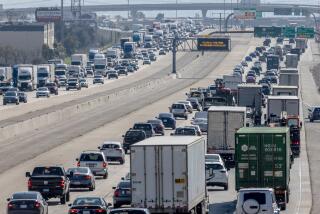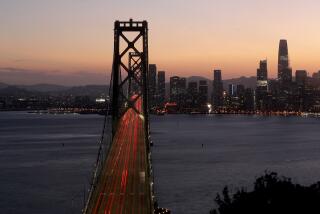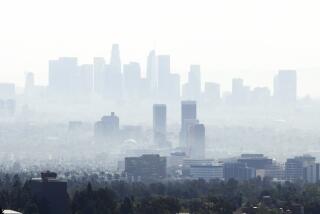Motorcycles and emissions: The surprising facts

- Share via
I’d like to begin this column with an apology. I’m sorry for ruining your day.
This story is about emissions. More specifically, it’s about the surprising level of emissions spewing from on-road motorcycles and scooters. In California, such bikes make up 3.6% of registered vehicles and 1% of vehicle miles traveled, yet they account for 10% of passenger vehicles’ smog-forming emissions in the state. In fact, the average motorbike is about 10 times more polluting per mile than a passenger car, light truck or SUV, according to a California Air Resources Board comparison of emissions-compliant vehicles.
For those of you who are wondering why I’m being such a killjoy, my reason is this: I’ve been hearing from an increasing number of readers who want to know if two-wheelers, which consume far less fuel, are also smog busters. Because scientific questions tend to come with complicated answers, I thought I’d do my best to explain what pollutants a gas-powered motorbike emits and why.
Motorcycles and scooters are, on average, about twice as fuel efficient as cars. Compact and lightweight, their internal-combustion engines do a better job of converting fuel into energy that makes the vehicle move. But extracting more energy from the fuel has a downside. It produces greater amounts of a smog-forming emission called oxides of nitrogen.
Oxides of nitrogen are one of three pollutants the Environmental Protection Agency and the Air Resources Board measure to see whether vehicles meet acceptable emissions levels and can be sold legally. Smog-forming hydrocarbons -- unburned compounds in fuel that escape through the tailpipe, fuel lines and gas tank -- are also measured, as is carbon monoxide. Carbon dioxide, a greenhouse gas, isn’t measured by either agency, but motorcycles are generally better than other vehicles in this regard since they use less fuel per mile.
As with other passenger vehicles, there are technologies to offset motorcycle emissions, such as catalytic converters, but those technologies tend to be too big, too heavy or too hot to fit on a motorcycle and work as effectively as similar systems on larger, enclosed vehicles that have more space to accommodate them. That’s why the EPA and the air board are more lenient on bikes than they are on other passenger vehicles.
“The emissions picture [for motorcycles] is fairly grim,” said John Swanton of the Air Resources Board, “but we think it’s fair for where motorcycles are today.”
Emissions standards for motorcycles are already more forgiving than they are for cars, light trucks and SUVs. Not only are motorcycles allowed to emit more than cars, they are also tested at lower speeds, which pollutes less. And motorcycle manufacturers only have to ensure that their vehicles of 179 cc and above meet governmental emissions criteria for the first 18,600 miles of a bike’s life, compared with 150,000 miles for cars.
Five years ago, the EPA tightened its emissions standards for on-road motorcycles with a two-tier system, the first of which tightened requirements for the 2006 model year. The second, even stricter phase kicks in for 2010.
California is the only state in the country with its own emissions standards, which are the same as the EPA standards except they’ve been fast-tracked to kick in two years earlier. In effect, the stricter standard has already been met for many of the on-highway motorcycles on the market because any 2008 model year bike that is sold in California already meets the EPA standard for 2010.
Right now, there are no plans for the air board or the EPA to further tighten motorcycle emissions requirements because:
* Motorcycles account for such a small portion of vehicle miles traveled.
* There haven’t been enough advances in motorcycle emissions technologies to enable further pollution reduction to any significant degree.
* There are other, even bigger polluters to deal with, such as diesel trucks, construction equipment and non-emissions-compliant products from China.
Noncompliant Chinese vehicles have become such a pollution issue in California, in fact, that the Air Resources Board has just added a new motorcycle emissions facility at its Haagen-Smit Lab in El Monte to test them. The board estimates as many as 20,000 all-terrain vehicles, dirt bikes and scooters are shipped into California from China each month, many of them with emissions that are at least 10 times higher than the state’s requirements.
Long story short: Motorcycles, even small ones, are more polluting than Hummers, but it’s the best that can be done for now. If you want to make a difference, consider an electric two-wheeler for your next bike or a gas-powered model with fuel injection and a 3-way catalytic converter.
More to Read
Sign up for Essential California
The most important California stories and recommendations in your inbox every morning.
You may occasionally receive promotional content from the Los Angeles Times.










